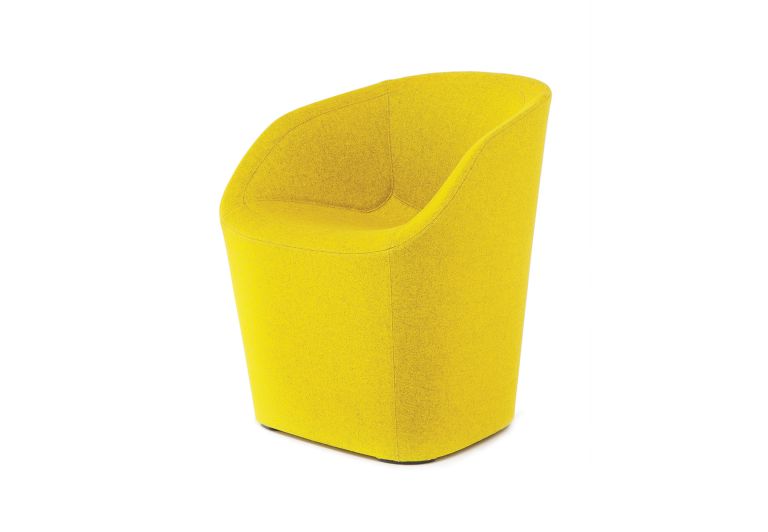The impact of the COVID-19 pandemic extends so far and wide that the industry most fundamentally affected is often overlooked: our integral healthcare sector. An increased need for patient facilities and the swift but unprecedented overnight shift in day to day operations only scrape the surface of the path-altering influence the global health crisis has left on this basic human right.
Today, we see large scale Government-funded infrastructure growth towards not only hospitals but medical labs, research centres and mental health facilities who have sadly also faced increased demand as a consequence of the pandemic. While on a smaller scale interior layouts and functionality, both within the healthcare industry and beyond, are being entirely reconsidered for a new standard.
Temporary solutions turned product integrations
Society's expectations of what is a clean and sanitary environment have shifted. Sufficient distance and accessible sanitisation are now, and will continue to be, considered basic requirements of any public shared space, with an even greater emphasis in facilities providing care.
The temporary solutions of the previous 12 months are no longer adequate. With corporate spaces investing in product modification, such as integrating sanitisers into storage solutions and even our very own Vertical Garden. Local medical clinics, dentists and other healthcare waiting rooms look to reshape these spaces with new layout designs and a creative application of soft architecture, side tables and other accessories to create spaces that provide distance without constructing emptiness.
These are just two potential solutions to the on-going challenge of increased demand for health precautions: achieving a higher standard of sanitisation and space without regressing environments into a cold, clinical and isolated feel.
Function comes first but aesthetics have value
This design obstacle emerging within the shared space domain – a battle of functional consideration and visual design – has long existed in patient rooms, not least of those within the mental health space. As this sector grows in both patient demand and understanding within the medical community, past solutions fall short.
We now know, through countless studies and even our own anecdotal experience, the meaningful impact our surroundings have on our frame of mind. The sensation colour, texture, touch and feel elicit within us, consciously and subconsciously, can no longer be delegated to the ‘too hard’ basket.
Historically, additional considerations and constraints to ensure patient safety came at the cost of these powerful aesthetics. The practical requirement of secure, soft and non-hazardous furniture unable to cause harm frequently meant mental health facilities were fit-out with lightweight, foam solutions that were notably different to other spaces, diminishing mood and perpetuating a sense of abnormality the mental health industry advocates against.
Our experience in the sector has led us to proactively develop solutions that address the functional requirements of these spaces without neglecting the value of the feeling our environment creates. This is most recently seen in our latest healthcare project: Sunshine Hospital Emergency Department (SHED) Ward Expansion Project at the new Joan Kirner’s Women’s and Children’s Hospital, incorporating 6 mental health wards.
Bringing these concepts into reality
Utilising our acquired knowledge, Australian manufacturing capabilities and innovative spirit, at Joan Kirner we created a space that delivered on specific requirements of a modern, mental health environment. Our locality allowed us to be responsive as Sunshine Hospital’s team evolved the designs to ensure a best practice space, highly conscious for the needs of their patients.
Our Blom Chair and Lounges were customised: moulded with metals and added weight before being covered with a cold cured foam and upholstered in a specially designed fabric made for the healthcare industry. Opting to modify pieces from our existing product collection provides a sense of equality and normalcy critical to this place of care. Selecting a heavier solution, in contrast to the more typical lightweight one, increases the quality and longevity of this furniture, an inescapable consideration of any project.
For some aspects of the project, regulations were so specific that customising existing products wasn’t an option. Patient bed frames need to be free from fasternals, nots, bolts, ligature and sharp edges. Foam or steel beds, a common solution, further amplified the stigma of these facilities. Our in-house design, engineering and manufacturing capabilities empowered us to create a bespoke timber bed that achieved this with a warm, welcoming presence.
In other cases, no modifications were required at all. Our history in the industry having previously overcome such ligature-free challenges, with appropriate products in our current product line. Kayt Lounge and Stazna Chairs fill the reception areas meeting the range of client goals through their original form.
A constant evolution
Not unlike the world right now, the healthcare industry and cross-industry healthcare solutions are continuously reviewed, refined and improved as we develop. We remain dedicated to future-thinking and learning alongside the medical community and design industry to deliver a holistic approach to places of care now and well into the future.
Related products

Blom Seating









